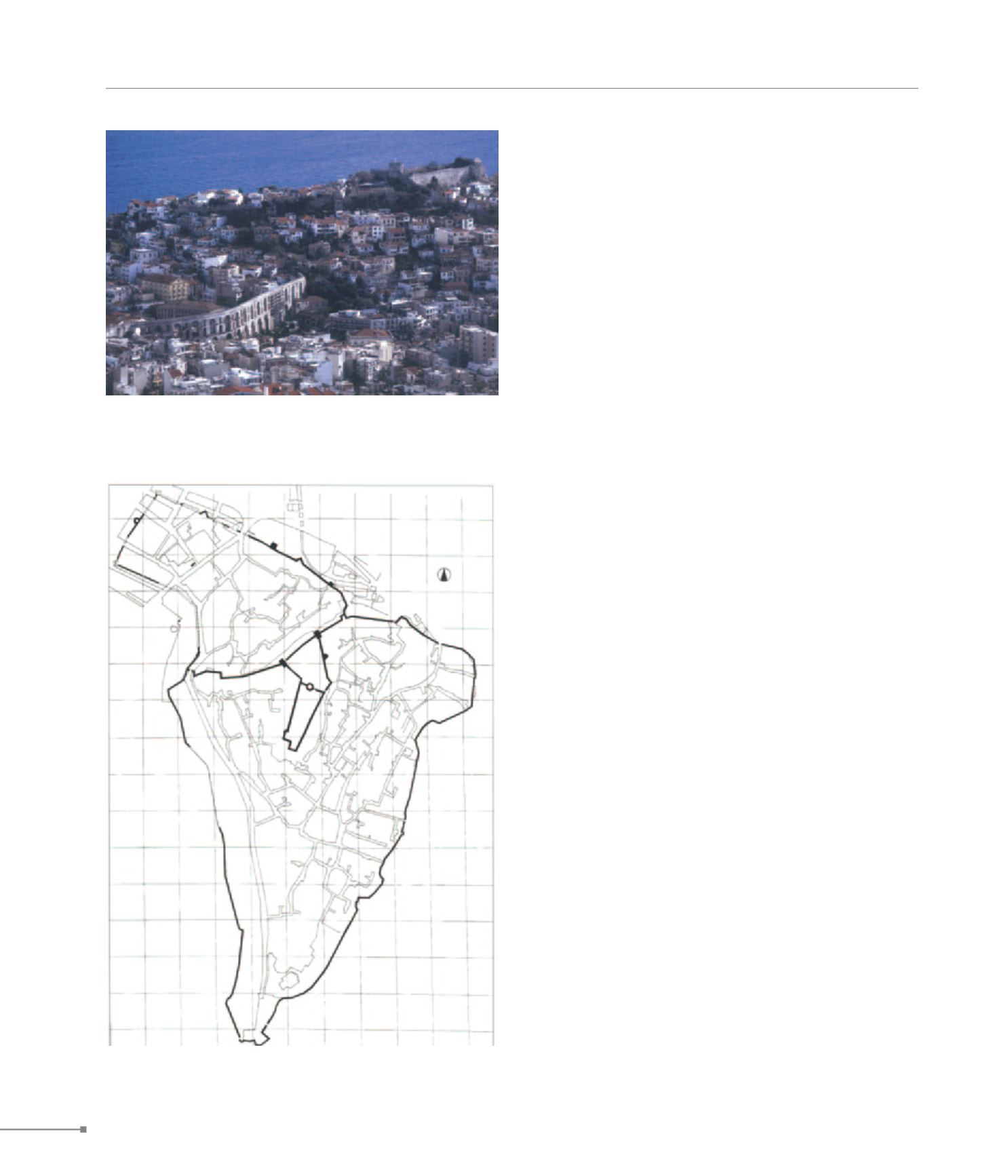
Diateichisma of Akontisma.
Kavala. Neapolis – Christoupolis.
MACEDONIA
100
33. Kavala, fortification, ground plan (Καβάλα, η οχύρωση, κάτοψη)
33. Kavala, the fortified city and the aqueduct (Καβάλα, η οχυρωμένη
πολη και το υδραγωγείο)
32.
Diateichisma of Akontisma.
E of Kavala, on the hills above Aspri Ammos, at the site of Eski
Kapou along the Via Egnatia, remnants of a diateichisma are
preserved. It consists of two parallel walls creating a passage
in-between. On the lowest part of the wall there was a gate, with
protruding defensive elements set on both outer sides provid-
ing increased security. Staircases in the passage led to some
sort of wall-walk above the gate. A tower stood at each end of
the diateichisma (only the north tower is preserved). The wall
dates from the Early Christian period.
33.
Kavala. Neapolis – Christoupolis.
A colony of the Thasians, Neapolis (Christoupolis from the 8th
c. to 1391) was a fortress and a key port for communications
between Macedonia and Thrace through the Via Egnatia. It was
captured and burnt by the Normans in 1185, and during Frank-
ish rule it was acquired by Lombard feudal lords. Circa the mid-
13th c. the empire of Nicaea took over the city and after the
mid-14th c. it was dominated by the brothers Alexios, grand
stratopedarch, and Ioannis, grand primicerius. In 1387 it was
captured by the Ottomans, and was destroyed in 1391. The
city extended along the steep Panagia peninsula at the edge of
the modern town of Kavala. At the top of the hill is the citadel,
with two enclosures and a donjon. The towers and ramparts
of the sea walls were constructed during Turkish rule, but the
quadrilateral towers of the land walls separating the peninsula
from the modern city are Byzantine. The fortification expanded
out of the peninsula for the first time possibly in the 3rd c. Build-
ing interventions took place under Justinian in the 9th and 10th
c., during the Mid- or Late Byzantine period. Just before 1425
the Ottomans erected initially the inner and then the outer en-
closure of the citadel. During the third decade of the 16th c.
the city enclosure underwent extensive reconstruction, and it
was the second time in its history that the city expanded out of
the peninsula. Excavations have revealed Early Christian and
Byzantine architectural components, pottery and coins; spolia
and inscriptions were incorporated on the walls and other con-
structions. At the tip of the peninsula, the Roman period aque-
duct, with two rows of high arches, owes its present structure to
building work by Ibrahim Pasha in 1520-30.


